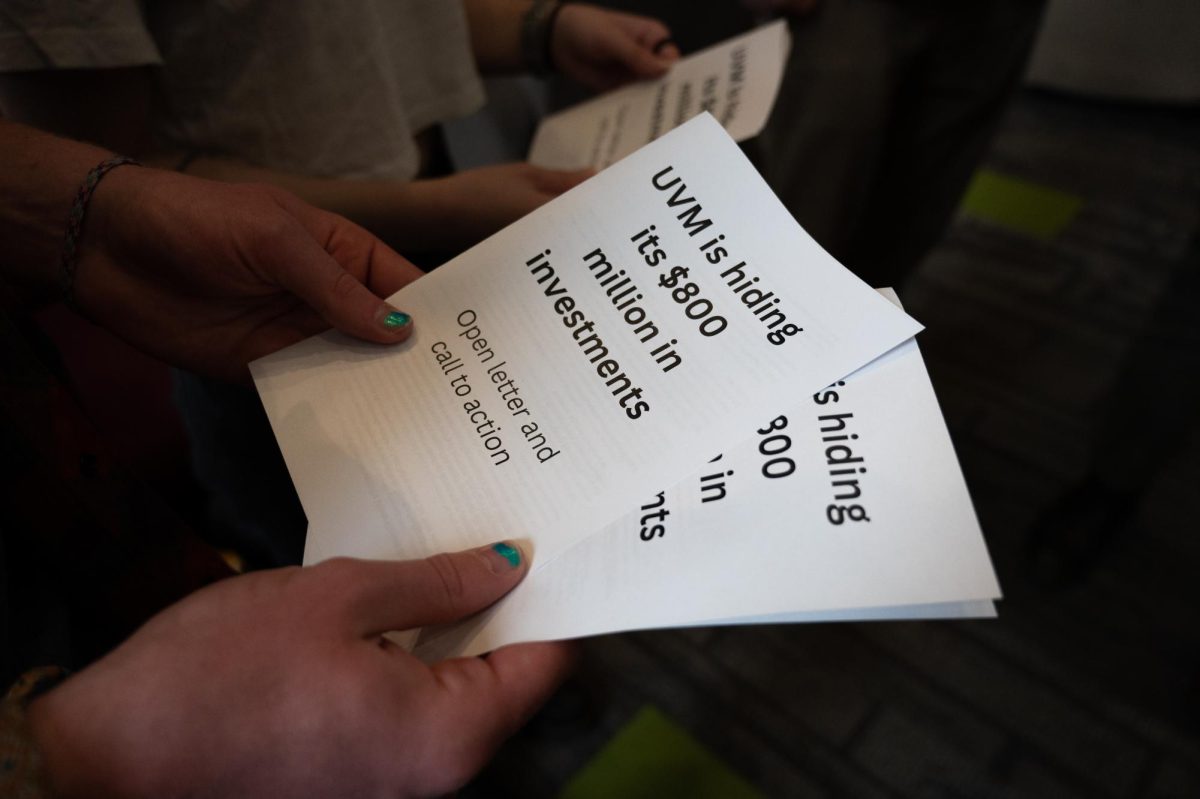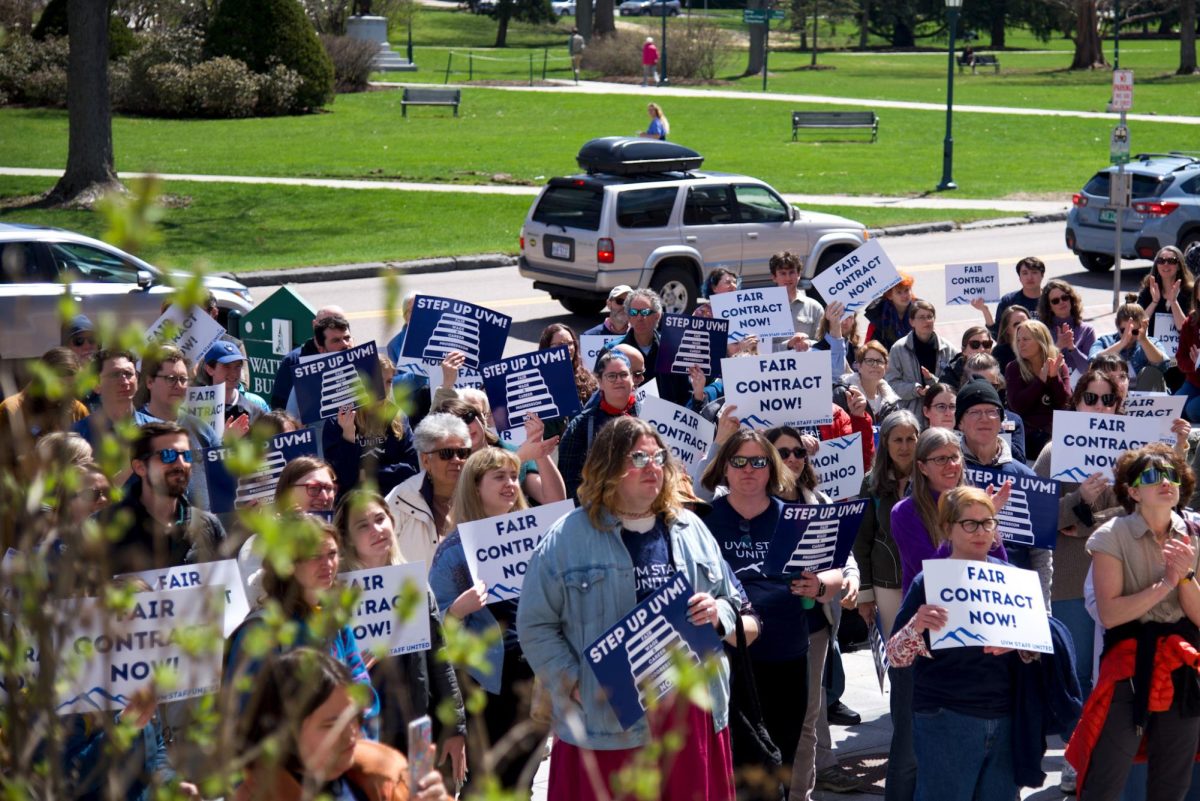Do you ever wonder exactly where the food you eat in the University of Vermont dining halls comes from and how it was produced? One group of students did: UVM’s chapter of Slow Food.The group began this year as the Local and Fair Foods Group, in response to student concerns about the quality of food oncampus and about the restrictions of the meal-plan.As an organization, it pushes for local, fair and high-quality foods at the University. Senior Corey Paradis started the group that would eventually become part of Slow Food USA. He said it was through talking with other students that he decided to take his concerns about the food UVM purchases to the next level.”Students started coming to Slade and asking how they could get off the meal plan,” Paradis said. “So I thought, `Well, let’s do something.'”Slow Food is an international movement that has member groups all over the globe, including clubs, restaurants, communities and even families. It began as a reaction to the first McDonald’s that opened in Italy in 1986 at the base of the Spanish Steps.A man named Carlo Petrini was outraged at the idea and organized a demonstration on the opening day of McDonald’s. Slow Food formed a mission statement and gained thousands of members.According to the Slow Food Web site, the Slow Food philosophy states: “Slow Food is good, clean and fair food. We believe that the food we eat should taste good; that it should be produced in a clean way that does not harm the environment, animal welfare or our health; and that food producers should receive fair compensation for their work.”Recently, the Vermont Food Summit, held across campus from April 6-10, brought these issues to the forefront on campus.Events included a cook-off between campus chefs, a potluck and contra dance, an open forum for ideas on the future of food, a day for new and aspiring Vermont farmers and a banquet at Slade Hall, the on-campus environmental co-op.Additionally, there was a food summit held daily in the Rosa Parks Room of the Davis Center, where students gathered to eat lunch and listen to visiting speakers.”The good thing about the summit was that it brought together different demographics,” Sodexho Sustainability Intern and Vermont Food Summit Coordinator Kate Turcotte said. “I thought it was very successful.”A few students, some of whom are part of Slow Food UVM, took the Vermont Food Summit as an opportunity to show UVM how they felt about the food being served to them.Dressed in biohazard suits and gas masks, they entered the Marketplace in the Davis Center with signs that sported phrases like “Real Food Now!” and “Vote with Your Fork.”They proceeded to mark off the foods they did not consider “real” with orange tape. At Brennan’s, employees were questioned about the source of their food, especially the chicken. “We want this food to meet certain criteria and that means local, fair, humane and ecologically sound,” Paradis said. “If the food doesn’t meet this criteria, then it’s not real.”Not everyone was happy about these students taking action. Davis Center Operation Manager Cathleen Barrows told this group that they were not authorized to be in the Marketplace.Although the Vermont Food Summit was one of the most publicized series of events that brought student awareness to the issues surrounding food and the way we eat, according to Paradis, Slow Food UVM said they still have plans.They hope to continue hosting events like film screenings and potlucks, as well as continuing their attempts to find ways to incorporate more local and fair foods into campus life.”I think it is realistic to start a student-run dining hall,” Turcotte said. “Then students would have an idea of how the system works. It exists at other schools.”Mara Welton of Half-Pint Farms at the Intervale addresses the obstacles facing local, fair foods on a larger scale.”Big companies advertise to the mass public. ‘Big Money’ drives industrialized food, which is our biggest challenge,” she said. “We have to retrain people’s minds, because once the public starts demanding local foods, that’s it.”Welton, who has been selling at the local farmer’s market for years with her husband, Spencer Welton, said that she believes the local foods movement is making great strides.”Supporting local businesses and eating foods that weren’t frozen and shipped across the country is something people are talking about, which is exciting to me,” she said.After attending some of the Vermont Food Summit events, Welton encouraged students to continue to teach others about local and fair foods.”I think some of the things you guys are talking about, like student dining halls and events to train people’s minds to try and buy local first, are what you need,” Welton said. “It was exciting to see how many people want to be involved in the food system.””I think that there is an interest at UVM for sustainable food systems,” Turcotte said.”The Slow Food message is so broad that it can incorporate anyone,” she said. “It also has a lot to do with food justice and with pleasure. I mean, food should taste good.”Slow Food UVM meets in UHeights South on Thursday nights at 8 p.m.They said that they plan to become an SGA recognized club as soon as possible and to continue meeting next semester.So next time you sit down to have an on-campus meal, think of their credo: What does good, clean and fair mean to you?












